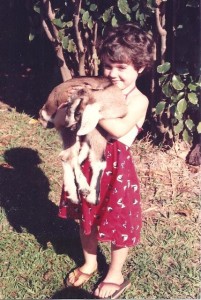On Really Seeing Children – Part 1
As a child I remember knowing clearly that there were two types of adults. There were those who tolerated my presence, put up with my questions and generally acted as though they’d be perfectly happy if I didn’t require anything at all. And then there were the other sort: the profoundly impacting version of adult that actually saw me as a person.
For the first type of adult I have very few real memories – just vague shapes of people, or nagging voices captured in my childhood archives. For the second group I can recall names, faces, emotions and snapshotted memories of times when these people reached into my world and made me feel recognised. These were the people who connected with me in times of grief, or fear, or joy. The ones that saw how I felt about something, or even the potential I had to do something.
Now that I’m an adult I hope I make a lasting impact on the children I interact with. I hope that when they come along I see them for who they are and acknowledge all they have to offer, but I know sometimes (especially if I haven’t had enough sleep or have been too busy personally) I am as guilty as the first type of adult from my own childhood.
So what does an adult who really sees children do? I believe there are two main things:
Take time to get to know them
This may seem burdenous, but in reality it isn’t. Children are blessed with quick attention spans, they have too much to discover in life they aren’t likely to hold you up over a cuppa at church morning tea for too long. So take advantage of the fact they are likely to dart off and capture a ladybug – and give them quality one of one attention. Listen to their stories, catch some of their enthusiasm and connect it with your own. (For example if the child you are conversing with begins raving about the train exhibition they went to, remember a time when you were little and the excitement you felt – you’ll probably catch it quick!) Listen to their stories, and remember them. Smile and acknowledge their entrance into a room, even if you are in conversation with someone else.
Encourage the potential within the child
You can’t really do this without doing the first, but once you see a potential, back it. My daughter runs a dance group for the girls at my church. She choreographs, teaches, encourages and prepares her group for performance events. This may not seem like a big deal – until you learn she is only 13 years old. It has been interesting to watch the adults that make a point of congratulating and encouraging my daughter after each performance. These are not always people directly involved in children’s ministry at our church – but they will be remembered by my daughter because they are really seeing her, backing the skills they see being developed and encouraging her potential.
What about you, how do you make sure you ‘really see’ the children in your life?
Or what examples of ‘encouraging potential’ can you share?


I love this post. Children are so needy for affirmation from the adults in their lives, especially from their parents. But there are too many children who get little or no encouragement from their parents. Christians need to be aware of this and look for opportunities to help fill that void in children’s lives when they can.
I think we all long to be noticed, really noticed. It’s part of the way we were made, and the way Jesus responded to people. He saw them, and he was moved to compassion, then he responded to what he saw.
Pingback:On Really Seeing Children – Part 2. | Christian Children's Authors